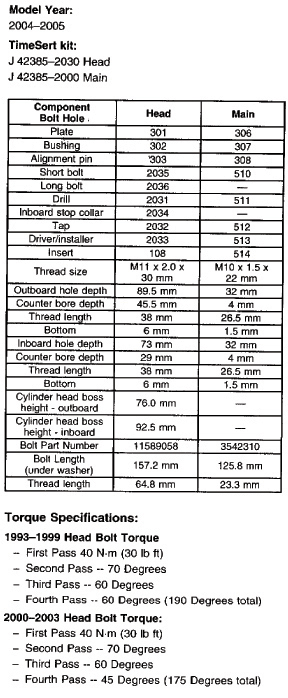When disassembling the GM Northstar 4.6L engine, all head bolt threads should be thoroughly inspected as they are removed. If there is any section of the aluminum block thread left on the bolt, that bolt hole will need to be repaired using a Time Sert or equivalent repair procedure.
Typically, not all the cylinder head bolt holes will be in need of repair. The recommendation is to perform thread repair on damaged bolt holes and adjacent holes. As the clamp load is relieved from one hole (threads pulling), the adjacent hole’s thread load will increase and may become damaged during reassembly.
There have been some reports of Time Serts pulling out of the block a short time after this repair has been performed. The manufacturer of the insert also makes a larger size insert, which should not be used for repairs. As a result of the increased OD of this insert, it’s possible that when installing this larger ser that it will break out in the water jacket, causing a coolant leak.
The most likely reason that a Time Sert pulls out after installation is that the incorrect J tools were used for the model year application. If the incorrect tool is used, installation of the Time Sert could be either too deep in the hole or not deep enough. The following charts list the correct tools to use for specific model years.
Some or all of the preceding technical information was provided by the
Automotive Parts Remanufacturers Association (APRA). For more
information on technical bulletins available through APRA call
703-968-2772 or visit www.AutoBulletins.com.















